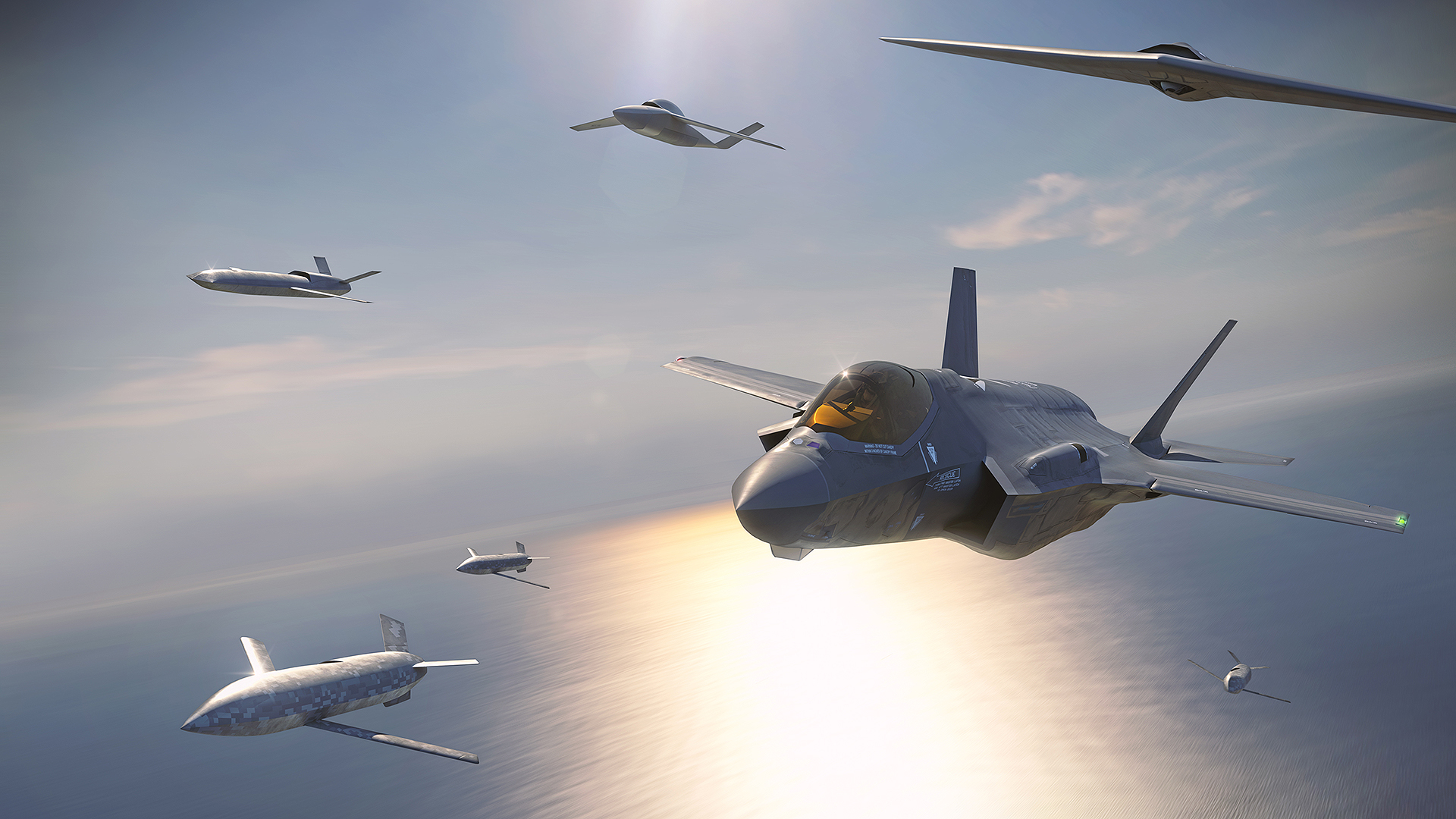Lockheed Martin has laid out its vision for the future of tactical air combat. The head of the company’s legendary Skunk Works advanced project division says its plan, which is centered on a multi-layered “distributed team” of diverse unmanned aircraft working in concert with manned types, presents a far more capable alternative to so-called ‘loyal wingman’ concepts, which involve air combat drones working ‘tethered’ to manned platforms in a relatively rigid fashion.
Lockheed Martin Vice President and Skunk Works General Manager John Clark provided details about this unmanned initiative at a virtual press briefing yesterday that staff from The War Zone attended. Computer-generated promotional materials the company subsequently released, seen at the top of this story and below, show four different pilotless platforms, which range from lower-end expendable and ‘attritable‘ designs to more ‘exquisite’ types, all intended to work in complementary ways with existing and future manned combat aircraft, as well as each other.

Clark explained that while Skunk Works’ distributed manned-unmanned teaming construct is new, as a whole, it is heavily rooted in past projects that Skunk Works has conducted, including many he has directly been a part of. He added that this specific effort has itself been years in the making, dating back at least to Will Roper’s tenure as Assistant Secretary of the Air Force for Acquisitions, Technology, and Logistics, which lasted from 2018 until last year.
“Will Roper was in his position and he started talking about the adjunctive systems that would be attached to the, you know, the crewed systems,” Clark said. “I really wanted to understand how these different systems would drive, you know, how, how we would approach it [the manned-unmanned teaming], where we would make our investments, and where the biggest bang for the buck was.”
“The term that’s really been latched on to by a lot of folks is this idea of a ‘loyal wingman,’” he continued, using a term commonly used to refer to unmanned aircraft generally designed to work directly at the command of manned types.
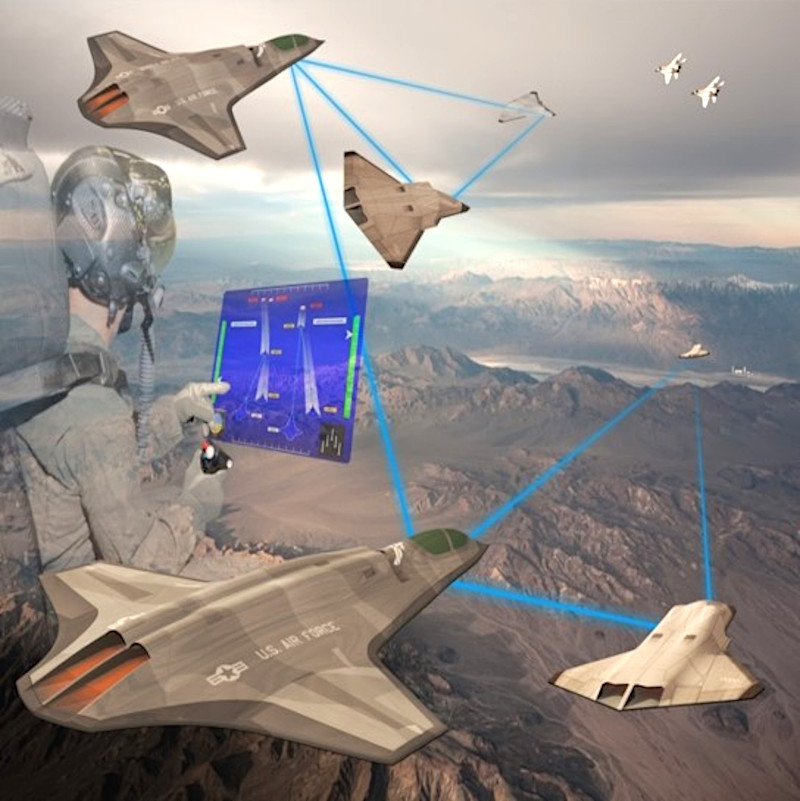
“As we went through and did our U.S. operations analysis, [we] didn’t see the loyal wingman constructs really making the substantive mission impact against the peer or near-peer adversaries the way that you would have expected off the cuff,” Clark said. Instead, “you started to have a distributed team and that distributed team is operating with each [one] with their own unique roles.”
He explained that initial work on the manned-unmanned teaming concepts at Skunk Works showed that if the drones weren’t specifically ‘matched’ in various ways to the manned platforms that they were supposed to be protecting or otherwise supporting, such as in terms of speed or radar signature, then they would actually provide dangerous cues to enemy integrated air defense system (IADS) networks. “Any indication or warning that they [the loyal wingmen] provided, then [would] be a tip that would then allow these IADS to start to find the things that we didn’t want the adversary to find.”
“So we really spent a lot of time then exploring, ‘all right, what does this distributed concept look like and how would we go explore that?'” he continued.
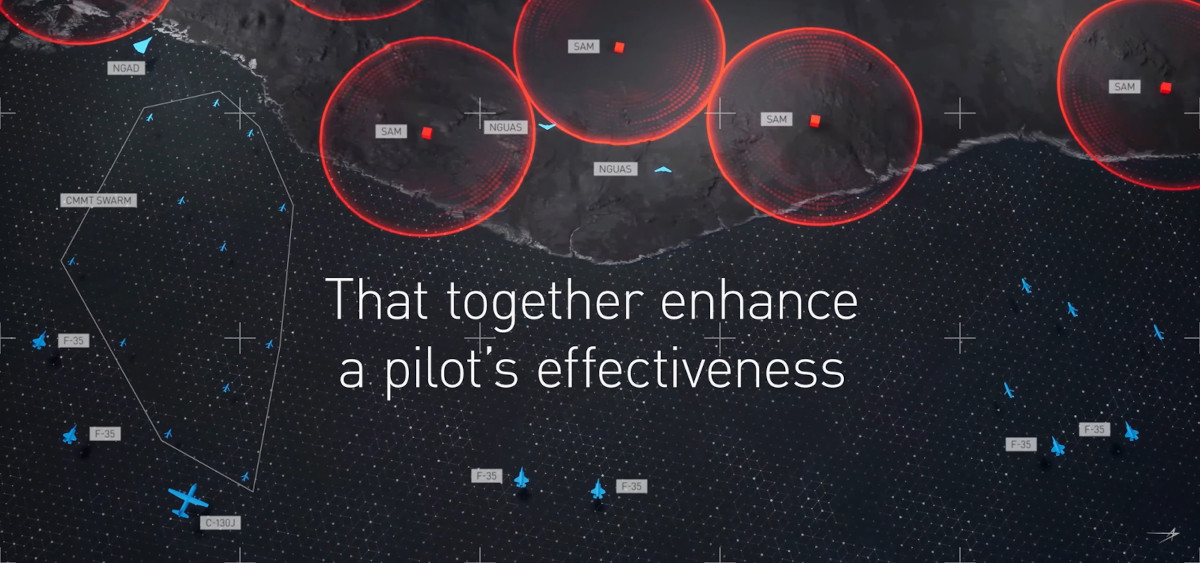
Skunk Works’ focus subsequently shifted to other ways to augment or supplement manned aerial combat capabilities in a more complementary fashion with a heavy emphasis on novel and distributed architecture. This “allowed us to have more freedom of flexibility or freedom of maneuver with respect to the types of capabilities that we could introduce,” Clark said.
“As an example, you know, one of the early concepts that we explored was actually the team member being a satellite as opposed to it being another aircraft,” he continued. “We actually started looking at, you know, how could a LEO [low earth orbit] constellation of remote sensors be made available to provide that information to, say, a Next Generation Air Dominance [aircraft] or a B-21 [stealth bomber] that was progressing on its mission.”
Both the U.S. Air Force and the U.S. Navy have separate but intertwined Next Generation Air Dominance (NGAD) programs that are seeking to develop and acquire a host of advanced aerial combat technologies, with unmanned systems being a critical part. However, generally, when people like Clark talk about NGAD, they are referring to the Air Force’s initiative, which is a ‘system of systems’ effort that includes work on a new stealthy manned combat aircraft and various drones, as well as new weapons, sensors, networking, and battle management capabilities to go with them.
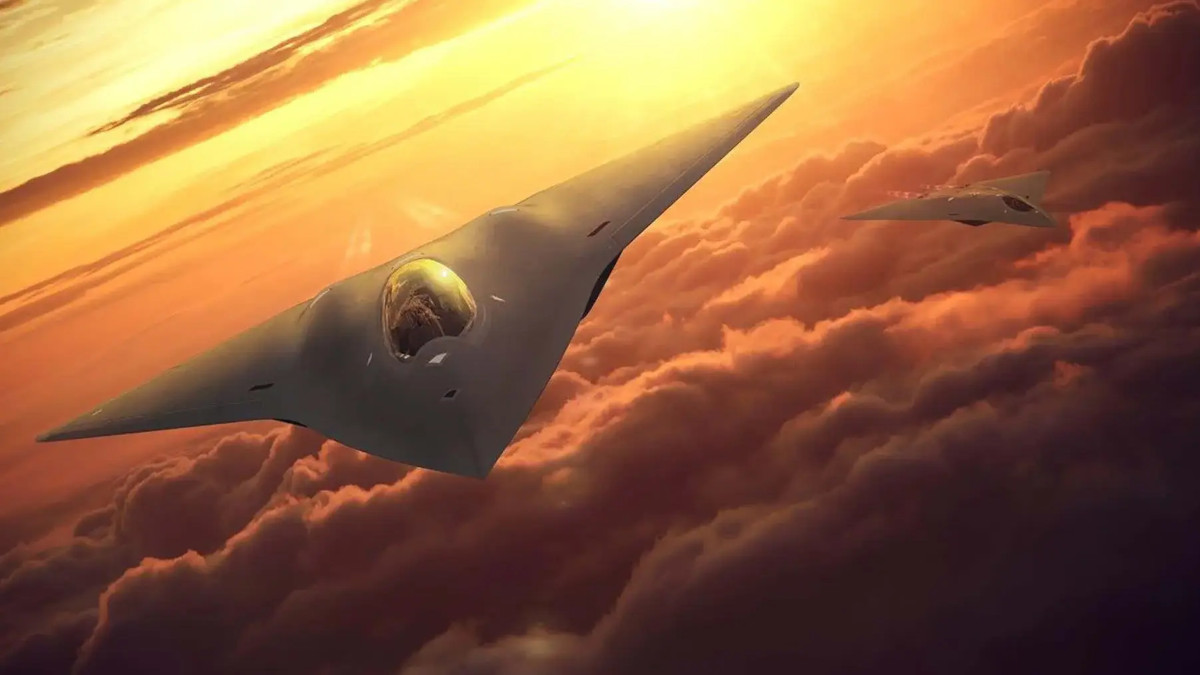
“Then we started exploring the ideas of expendable aircraft,” according to Clark. The Skunk Works chief stressed the distinction here between expendable and so-called “attritable” platforms. Broadly speaking, attritable unmanned aircraft are designed with a balance of capabilities and cost that is intended to enable commanders to be more willing to utilize them on higher-risk missions that would otherwise preclude the use of a more expensive and complex platform.
Clark laid out the issues as Skunk Works sees them with the capabilities/cost ratio in the following way:
In the context of any of these fights, attrition has got to be a part of the calculus. You can demonstrate any mission concept in an operational analysis venue and show that, hey, it works once. Can you make it work repeatedly over 30 days when you start to accumulate the losses of a campaign?
…the cost proposition that you’re looking at and if you’re looking at the cost of losing a vehicle, it’s, let’s say $10 million and your attrition rates’ north of 80%, those numbers add up very quickly. And then that remaining 20% that you didn’t atrit, what’s the sustainment or logistics trail that comes with them to reconstitute them, to then go reuse them?
With this in mind, Skunk Works had explored one concept that involved drones that would “splash down” in the water, allowing for recovery by the Navy, according to Clark. This highlighted the immense logistical chains that could emerge, with friendly surface ships then also at increased risk due to the need to conduct these retrieval operations.
Clark said that going cheaper, enough for the drone to be expendable, or at least “optionally recoverable,” is one option. In the other direction, the price point can go up if the unmanned platforms are better matched in terms of speed and signature to their manned counterparts since this helps reduce attrition, he added.
“As we look at these adjunct systems, well, they can be remote weapons stations operating farther forward. They’re not attached. They’ve got a better geometry,” Clark explained. You “start to see that mission impact in a pretty significant way where the survivability of the entire [force] package goes up. And that long-term campaign cost isn’t growing exponentially because of the attrition.”
“We saw some value proposition at the lower end of having expendable systems,” he continued, specifically highlighting an experimental Skunk Works design called Speed Racer, which you can learn more about here. Publicly, Lockheed Martin initially described Speed Racer simply as a “pathfinder” for future designs by exploring and refining digital engineering technologies and advanced manufacturing techniques. However, the company disclosed last year that the name was actually an acronym standing for Small Penetrating Expendable Decoy Radically Affordable Compact Extended Range.
The older Lockheed Martin video below includes a rendering of the Speed Racer experimental vehicle, as seen in the thumbnail.

“That really created a lot of chaos and confusion with the adversary IADS right up front,” according to Clark. “Now we’re really exploring the combination of taking those expendable systems and then putting these higher-end adjunct systems that are operating in these detached cutoffs and seeing how those work.”
The still rendering and the computer-generated video that Skunk Works released yesterday after Clark’s press briefing outline much of what he had described. Basically, a flexible and tailorable ecosystem of unmanned capabilities, from lower-end and cheap to higher-end and not-so-cheap, that could work collaboratively with manned aircraft, to succeed over the battlefield.
Of the four drone designs depicted, the lowest tier is occupied by an air-launched, missile-like design with a splayed v-tail and pop-out swept main wings called the Common Multi-Mission Truck (CMMT). The still rendering shows examples of these drones with a single offset air intake on the right side of the center of the fuselage, while the video shows ones with two symmetrical intakes in roughly the same location.
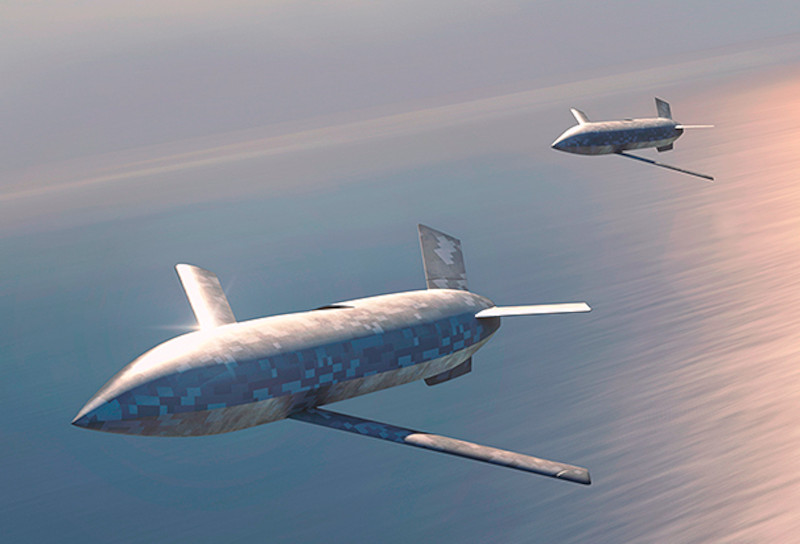
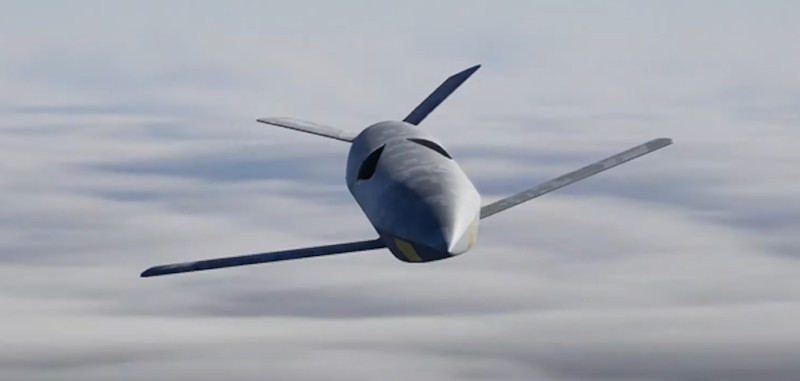
The video shows these drones being launched from an F-35A, but also shows a scenario where 12 of them are flying in a networked swarm ahead of two Joint Strike Fighters and a C-130J Hercules cargo plane. A delta-winged shape labeled “NGAD,” which could reflect the stealthy manned combat aircraft now being developed under the Air Force’s NGAD program, is also seen flying ahead of this entire formation.
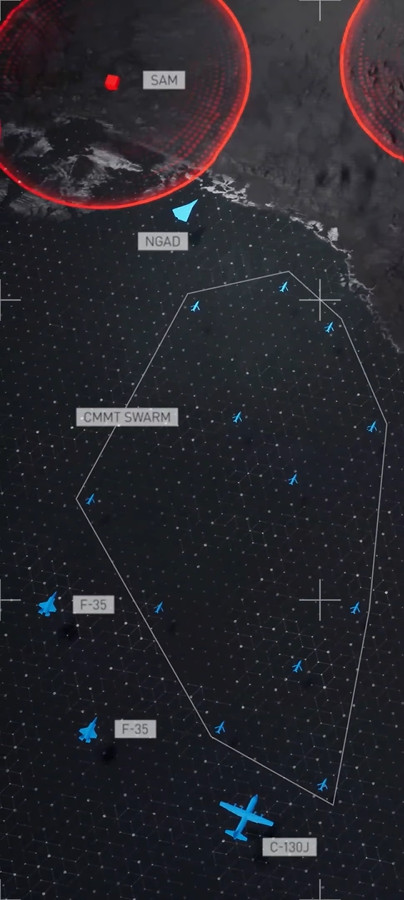
The Defense Advanced Research Projects Agency (DARPA) has been experimenting with the launch and recovery of small drones with swarming capabilities from a C-130-type platform for years now as part of its Gremlins program, which Lockheed Martin is not presently involved in and that you can read more about here. It’s unclear whether Skunk Works is interested at all in making the CMMT air-recoverable, as is the case with the Germlins vehicles, but the expendable nature of the design certainly indicates that such a capability would not necessarily be a priority. Air launching a swarm of them, or swarms of them, via a transport aircraft could be beneficial though.
In the video, as seen in the still below, these particular drones are shown acting as decoys and as small electronic warfare (EW) jamming platforms to confuse and blind hostile air defenses. Higher-end platforms integrated into the larger manned-unmanned team could launch their own kinetic or non-kinetic attacks on those same targets.
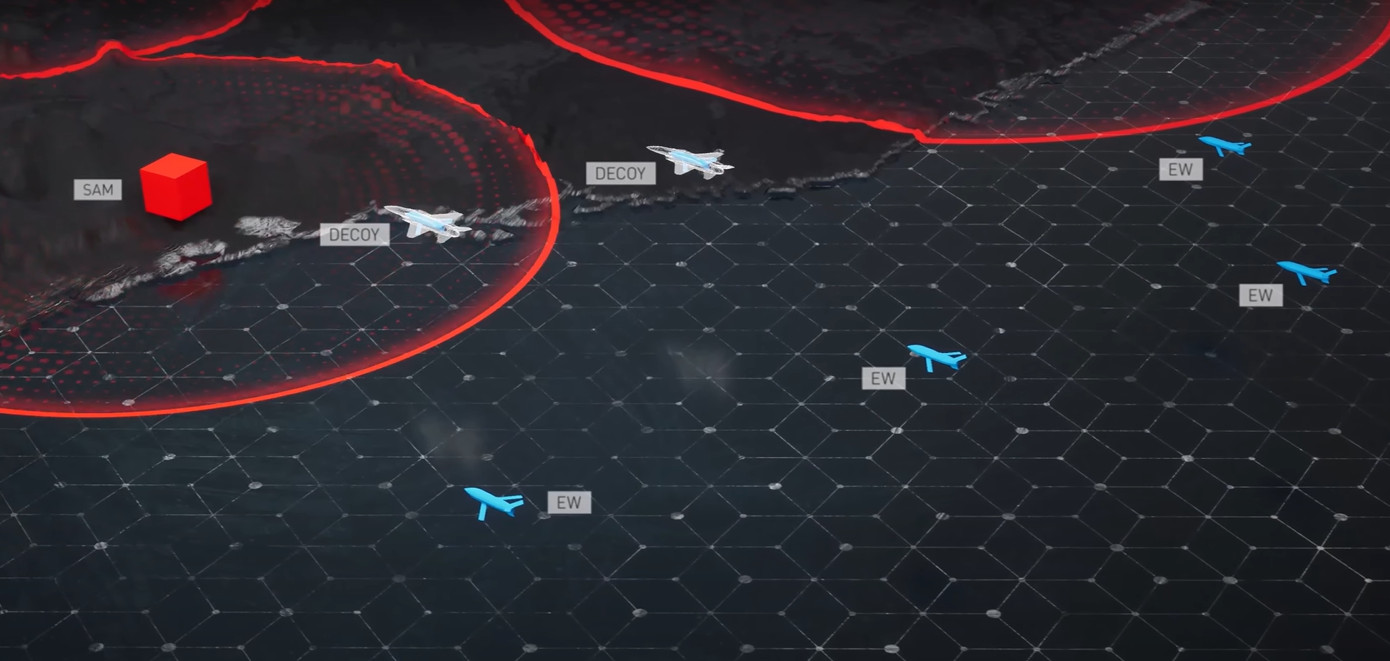
Skunk Works has made it clear that CMMT is intended to be a modular and expandable design that could take on other roles. It’s not hard to imagine these drones being configured for use as elements of a distributed ‘mesh’ sensing network, or even potentially carrying small warheads to carry out ‘suicide’ strikes. The U.S. Air Force is experimenting with the idea of networked munitions with high degrees of autonomy as part of its Golden Horde program and also explored ideas for low-cost cruise missiles in recent years through the Gray Wolf project, among other relevant initiatives.
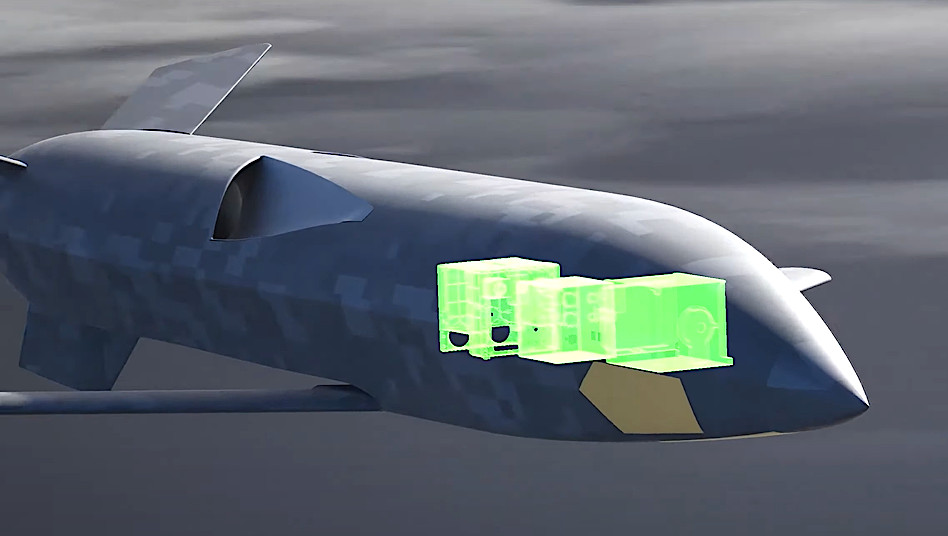
The new Skunk Works promotional materials show another larger, and potentially attritable, unmanned combat air vehicle (UCAV) type design with swept main wings, a splayed v-tail, and a single air intake on top of the rear fuselage. This unmanned aircraft, called the Tactical Expendable-Combat Air Vehicle (TE-CAV), also has clear low-observable characteristics, particularly a chine-line around the fuselage. This is, in broad strokes, a familiar configuration now for lower-end UCAVs.
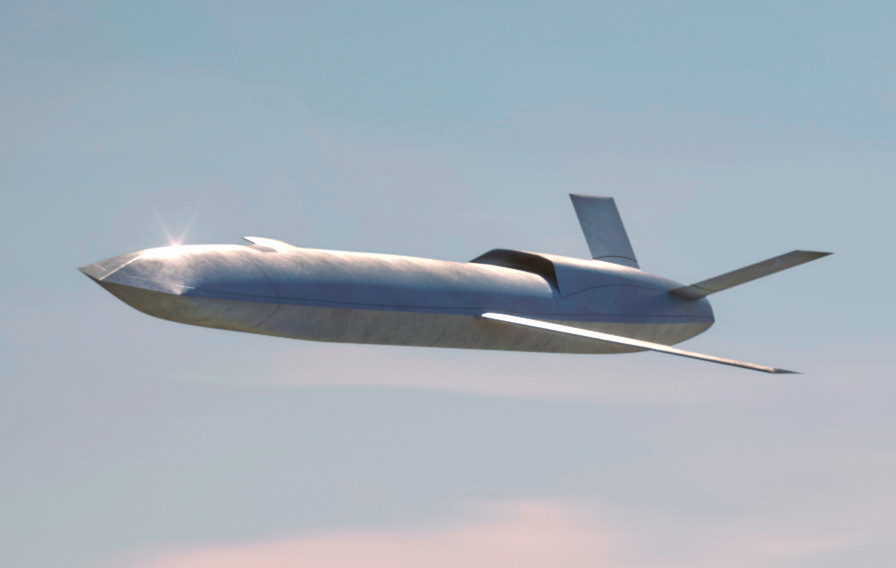
The video presentation shows four of these unmanned aircraft labeled as “kinetic” flying together with a pair of F-35s and firing unspecified munitions at hostile air threats. This reflects the “remote weapon station” role that Clark had described. It’s also interesting to remember that Lockheed Martin is one of the companies involved in DARPA’s Long Shot program, which is exploring concepts for air-launched drones that could extend the reach of manned fighters in air-to-air combat, including into highly contested airspace.
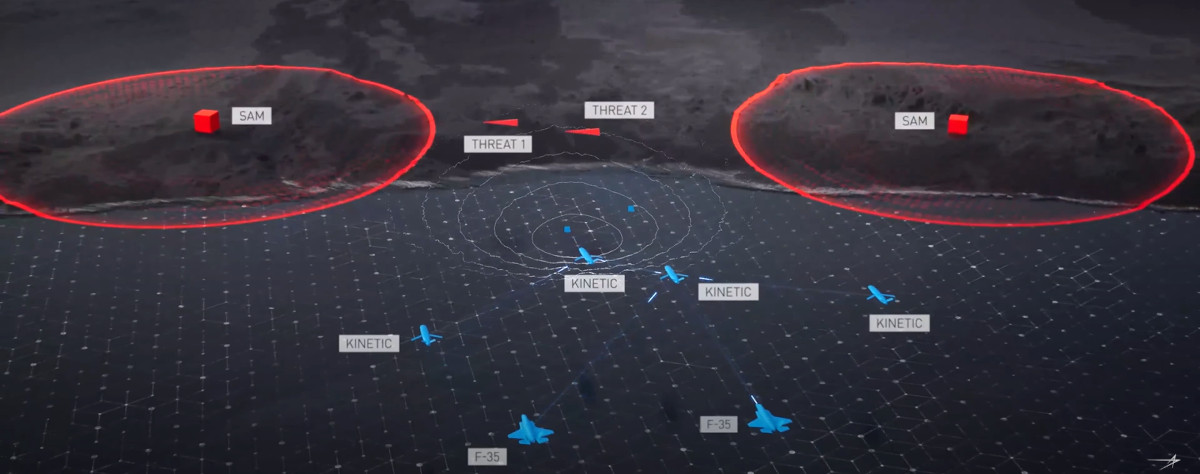
The newly released promotional materials show another mid-tier drone design in addition to the TE-CAV. While this unmanned aircraft also has swept main wings, a v-tail, and a single air intake on the top of the fuselage, it has a completely different planform compared to the TE-CAV. One could speculate it is more about efficiency and persistence than high performance. It has a clearly defined nose section, which could possibly contain a radar, as well as what look to be modular payload sections under the fuselage. In addition, the air intake is contained in a hump-like structure, something that is often associated with satellite communications systems. This could potentially act as a less deeply-penetrating sensor and networking node, providing the rest of the swarm of manned and unmanned systems with beyond-line-of-sight connectivity. Of course, this is just speculation based on the imagery seen. Considering the highly modular approach Skunk Works is taking with the plan overall, it could likely serve a variety of roles based on the mission.
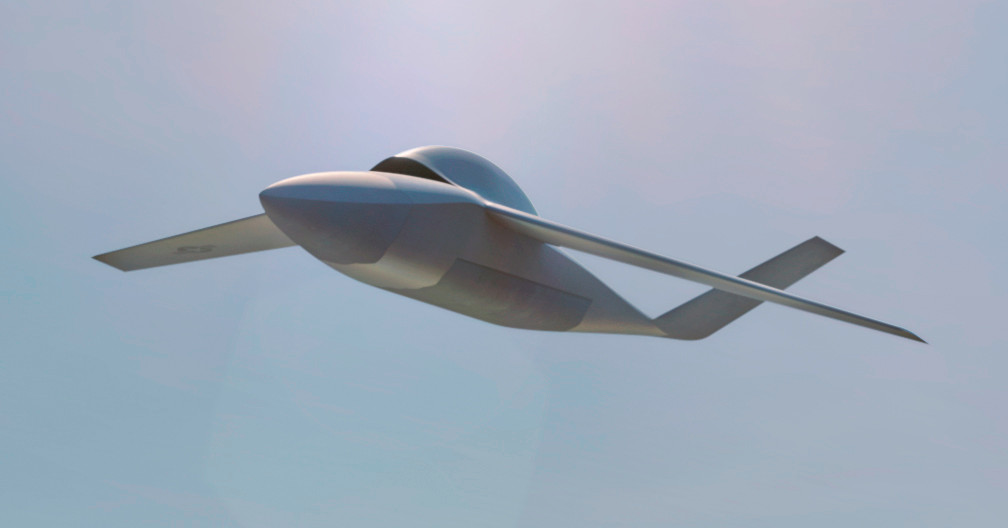
Lastly, at the higher end, is a stealthy flying-wing type unmanned aircraft, described as a next-generation unmanned aerial system (NGUAS), which is clearly derived from Skunk Works’ RQ-170 Sentinel and the subsequent Sea Ghost concept, which featured a prominent satellite communications dome atop its ventral intake. The latter design was entered into the Navy’s abortive Unmanned Carrier-Launched Airborne Surveillance and Strike (UCLASS) carrier-based UCAV competition. A far less stealthy flying wing drone from Lockheed Martin subsequently lost out to a design from Boeing in the U.S. Navy’s follow-on MQ-25 tanker drone competition.
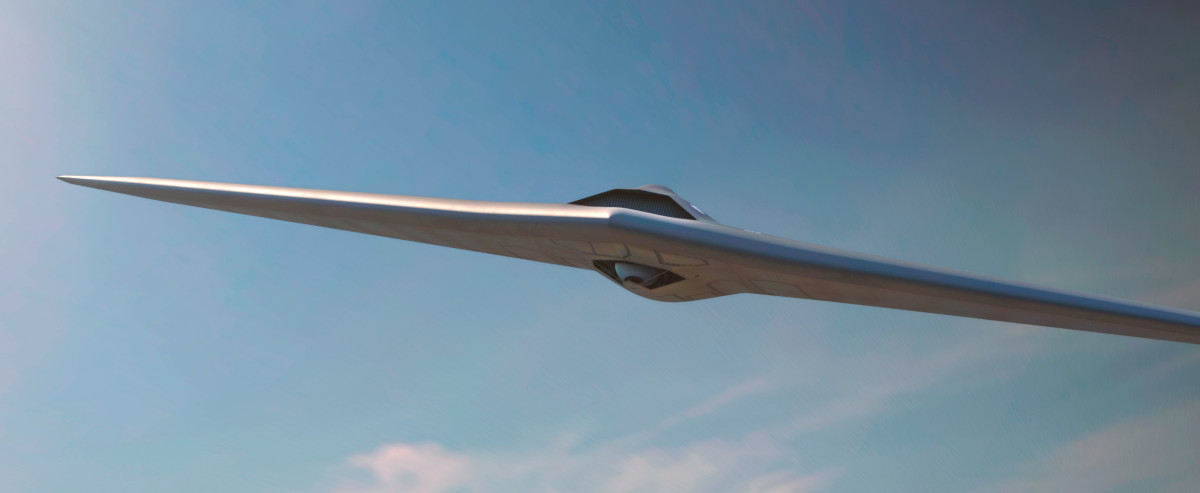
Lockheed has teased a land-based Sea Ghost-like concept based on a ‘supersized’ RQ-170-like configuration for years now. It would provide long endurance, medium-altitude capabilities, and enough survivability to operate in contested airspace at the edges of detection. This aircraft could presumably be used for many types of missions and considering its cousin has been operating for at least a decade and a half now, the credibility of the design is high and its developmental risk would be comparatively low — if it doesn’t already exist.
In the new Skunk Works video, a pair of these drones are shown flying in an orbit right at the edge of a hostile air defense network performing intelligence, surveillance, and reconnaissance (ISR) missions, and feeding that information to other aircraft in the battlespace. An additional threat then pops up where they are flying, which they then alert other friendly forces to the presence of.

Clark stressed that there could be some flexibility in the exact ‘matching’ of performance or other capabilities at the higher ends of the cost spectrum.
“When you get to that next tier [beyond expendable], I don’t know that it’s necessarily defined by speed per se, but it’d be a survivability match,” he explained. “So you may have something that flies slower or faster than the other systems it is collaborating with.”
“You have to make sure that you mitigate the ‘regrets’ of the other system. And so the regrets, if you’ve got a system that is very observable, say at a low band [radar] frequency, if you can see it and [then] everybody sees it. But now those IADS, all their energy is pointing in that direction. So something before that would have maybe snuck by as noise in the radars, suddenly there’s people looking at it and asking questions and they can start putting other energies on it.”
“So that’s really where, so that next tier, it could be something that could have a variety of capabilities, super high-end, or it could be something that is, you know, over lower-end, but still signature matched,” he continued.
Beyond all this, “it’s tying in these higher-end systems,” Clark added. “We’re exploring how we network them together.”
In terms of networking, Clark specifically cited previous Skunk Works experimentation involving near-real-time data sharing between stealthy platforms, like F-35 Joint Strike Fighters and F-22 Raptors, with U-2S Dragon Lady spy planes acting as communications gateways, which you can read more about here. He said the new cohesive manned-unmanned teaming effort is leveraging work that the U.S. military is doing through the DOD-wide Joint All-Domain Command and Control (JADC2) initiative, as well. JADC2 is a broad, overarching program to improve networking and associated capabilities, with a heavy emphasis on artificial intelligence (AI) and machine learning technologies, across the services for use on aircraft, as well as ships, ground vehicles, and space-based assets.
“So we’re really exploring how that all ties together. [We have been] doing a number of demonstrations over the last few years with the Air Force Test Pilot School,” Clark said. “We’ve got a collaborative relationship with them where we’ve been putting a lot of this autonomy and artificial intelligence software on the F-16, exploring how when one of these assets performs a specific behavior or executes a specific role in some collaboration, how can those things all execute.”
Though it’s not clear if this was the jet Clark was referring to, the Air Force Test Pilot School, in cooperation with contractor Calspan, does operate a highly modified F-16, now known as the X-62A, that has been used in loyal wingman and autonomy-related testing over the years. This is known to have included work done in direct cooperation with Lockheed Martin.
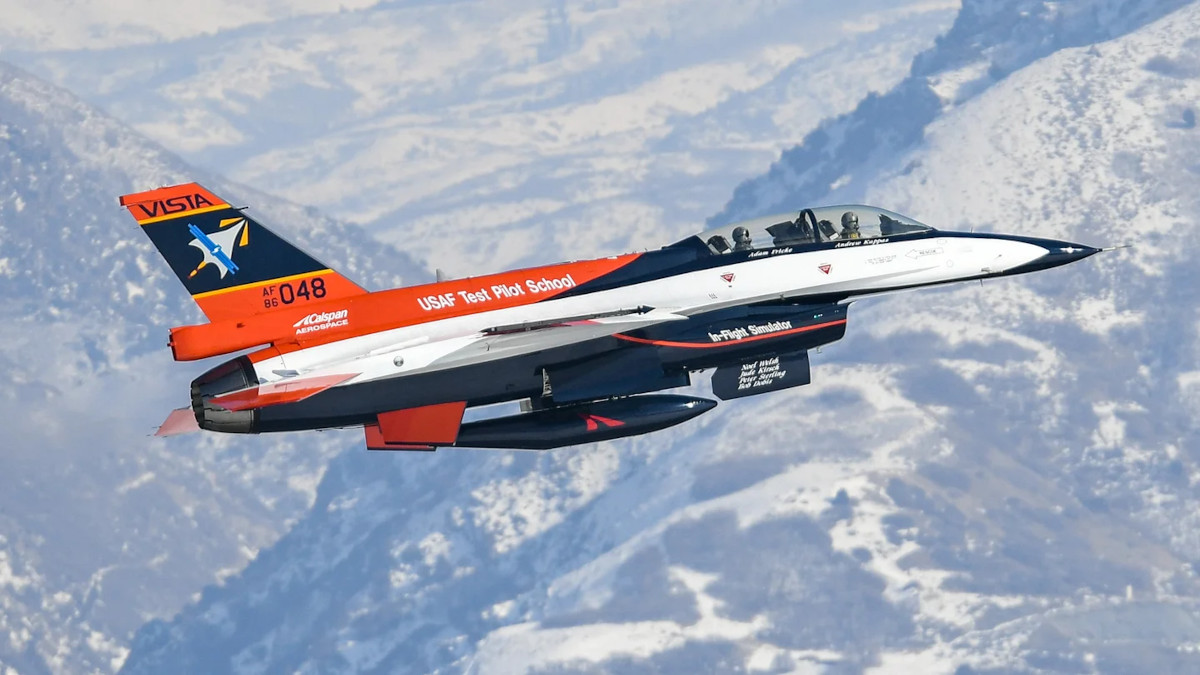
“So, as an example, one of the things that we explored was that the uncrewed vehicle had passive sensors,” Clark continued. “The sensors… are fixated on what the crewed system was doing or the system was doing and focusing on it, and it would adjust its behaviors and its evaluations based on what it was observing. And so it didn’t require a lot of human-in-the-loop reaction.”
“I think that’s one of the things that we’ll never get these types of crewed-uncrewed training concepts put in place if we put a lot of burden or workload on the pilots in the system,” the Skunk Works head noted. “They already have a heavy burden to bear… [and putting] the direct control of a bunch of uncrewed vehicles on top of them is really not a tenable path.”
“That’s where all this autonomy and artificial intelligence software that we’ve been testing comes into play,” Clark added. “So as we continue to explore this, we’re going to evaluate how we’re going to invest, where the operations analysis tells us we’ve got the greatest value proposition to impacting our customer and making sure that they’re successful.”
Skunk Works’ Clark said that there has already been engagement with various “customers” regarding these designs and associated concepts of operation, but did not name any entities specifically. As already noted, what he outlined for this new distributed team overall is certainly very much in line with various known U.S. military advanced aerial warfare initiatives, especially the Air Force and Navy NGAD efforts. A number of American allies are working along similar lines, too. Boeing’s Airpower Teaming System (ATS) unmanned aircraft design for the Royal Australian Air Force, seen in the video below, is a prime example of these foreign efforts.

There is also a clear hope that the heavy focus on designs with high degrees of modularity, further enabled by the use of suites of readily upgradeable and modifiable open-architecture flight and other mission systems, will only make it easier to adapt designs to new roles and missions, as well as expand their capabilities, as time goes on. This could include non-combat missions, as well, with certain unmanned platforms being able to support training and test activities, including possibly acting as red air aggressors, according to Clark.
“We talked about, hey, they could be used potentially say like adversary air training as you’re training pilots out there today that they’re able to take advantage of these as a way to go increase their proficiency and skills of dealing with an ‘intelligent adversary,’ if you will, if it’s got some artificial intelligence and can have some really crazy maneuvering capabilities,” he said.
Clark emphasized that customer requirements will still be key factors in how drones within the distributed team are specifically configured. “We’ve got customers that [say]… signature match makes sense. There are some customers that are very focused on the speed match side.”
“We’ve not had a customer equivocally say, yeah, you’ve got it wrong,” he added.
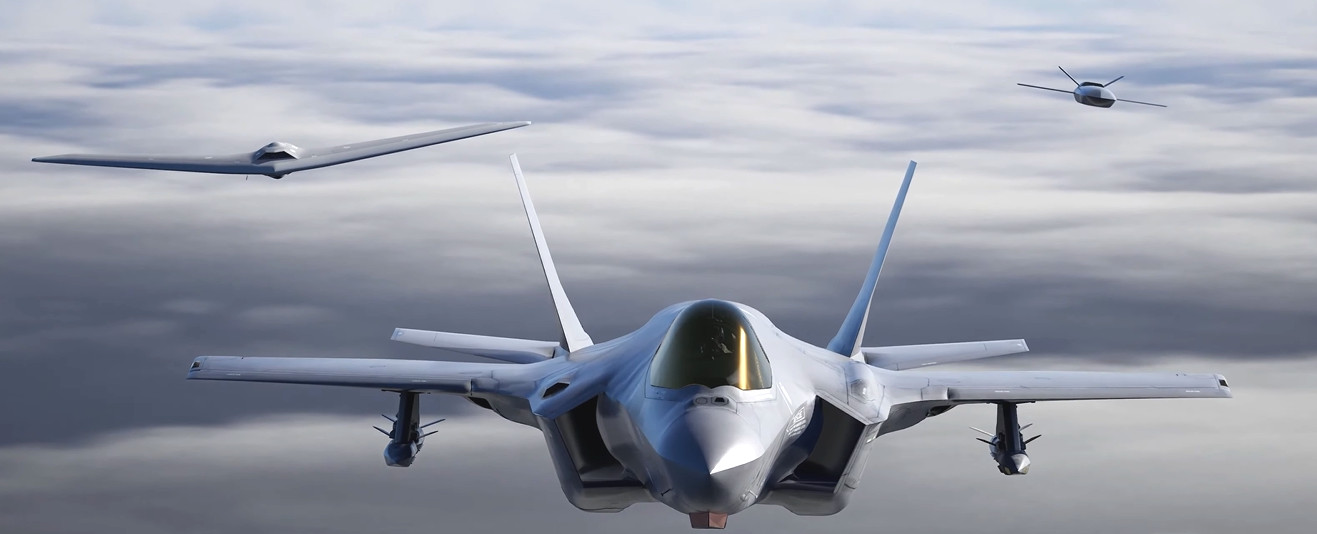
Skunk Works’ view of distributed unmanned capabilities presents a clear potential path to a future without manned platforms, at least in some circumstances, as well.
“I think that the right answer is that it’s going to be mission dependent,” Clark said when asked about the potential for purely unmanned operations using the capabilities in development now. “But there are places where some of these uncrewed systems could be used in a meaningful way during phases of the mission without a band controller, if you will. Sure. And I think that there’s going to definitely be missions or scenarios where that fits in.”
Clark also said that Skunk Works is of the belief that a lower-tier CMMT-like system could be operational within three to four years, while higher-end components of the distributed team are more likely to be ready in the early 2030s. This would broadly align with the Air Force’s NGAD timeline, although this plan is not exclusive to that program. Clark also mentioned that this would be around the time when the Air Force really expects to begin retiring older fighters. Regardless, as has been pointed out, many of these proposed designs, or at least the core underlying technologies, are likely to be very mature based on work that has been done already.
All told, what Skunk Works has detailed is really just a preview of a larger vision for how it sees manned-unmanned teaming in aerial warfare evolving in the coming decades. More specific information about the various proposed platforms and their capabilities is now expected to emerge in the coming months.
Contact the author: joe@thedrive.com
